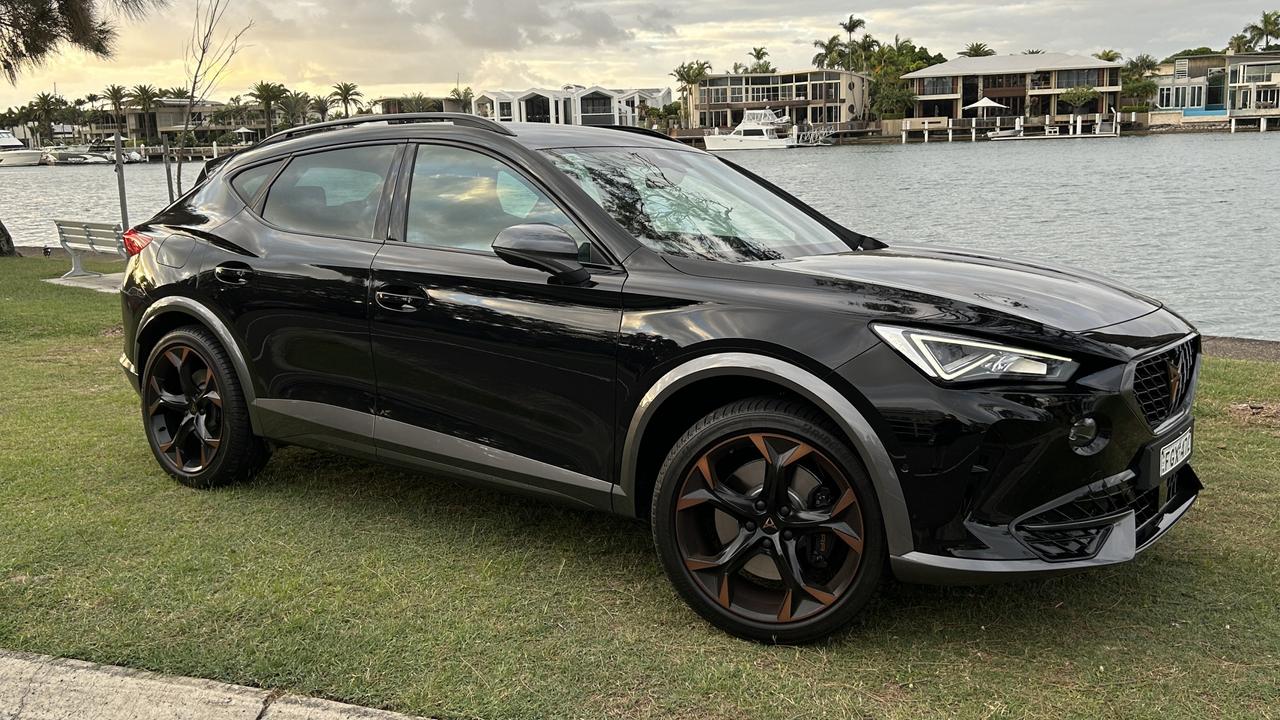2023 Hyundai Ioniq 5 review reveals great style, space and range
Thousands initially registered interest in the Hyundai Ioniq 5, now the line-up to get one of the best EVs on the market is dissipating.

Business
Don't miss out on the headlines from Business. Followed categories will be added to My News.
Pipe dreams are becoming a reality. In fact, the pipe is now smoking hot.
Electric vehicle uptake in Australia had been slow, but as we emerged from the pandemic shadows evolution became revolution.
Labor’s latest budget included $146m to support the EV uptake and improve charging infrastructure. That includes fringe benefits tax exemptions, which provides more benefits for employees leasing zero emission vehicles.
That helps reduce the cost of circa $50,000 EVs down to similar to what they would pay for a small hatchback with a standard petrol engine.
The timing couldn’t be better for Hyundai. After initial supply issues back in 2021, its Ioniq shop showcases battery electric vehicles exclusively and is now “always open”. There are two Ioniq vehicles currently in the showroom with hundreds of new models currently available across the nation.
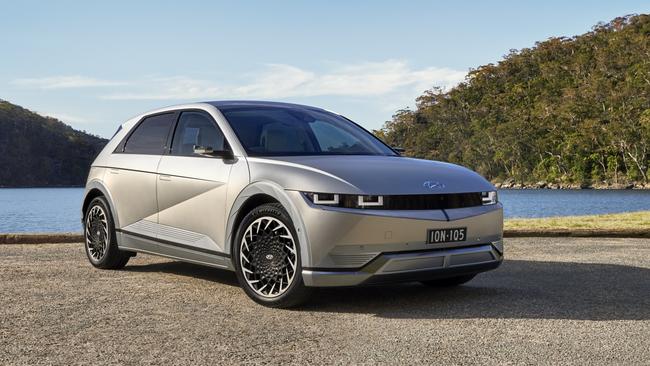
WHAT WERE YOUR FIRST IMPRESSIONS?
KEL: Eye-catching to say the least.
GRANT: The Ioniq 5 is subdued compared to the curvy Ioniq 6, which has just arrived Down Under. Only about 240 Ioniq 5s were allocated from the thousands of prospective buyers who initially expressed interest two years ago.
KEL: I think it’s the enclosed grille which always attracts attention. I felt it was reminiscent of a futuristic Space Invader with the sharp edges, slick LEDs in the front and the disco-style tail-lights, along with the flashy wheels.
GRANT: Without doubt it’s a head-turner. Our test was in the mid-range Techniq version that starts from about $83,400 once on-road costs are settled. About $8000 less is the Dynamiq, which has a better range but less power.
KEL: When fully charged our car was showing a range of about 440km.
GRANT: That figure proved accurate with real world driving, and this version is remarkably punchy with 239kW/605Nm compared to 158kW/350Nm in the base model that has one motor on the rear axle compared with all-wheel drive courtesy of two motors in the Techniq.
KEL: I found the style to be a cross between an SUV and a hatch. It was surprisingly spacious and I especially loved the white leather trim along with the minimalist cabin design.
GRANT: Parts of the leather are man-made, but the colour combination of white and grey delivered an open cabin feel with large dual screens (one for infotainment and the other for driver instruments) pushing the tech-savvy credentials.
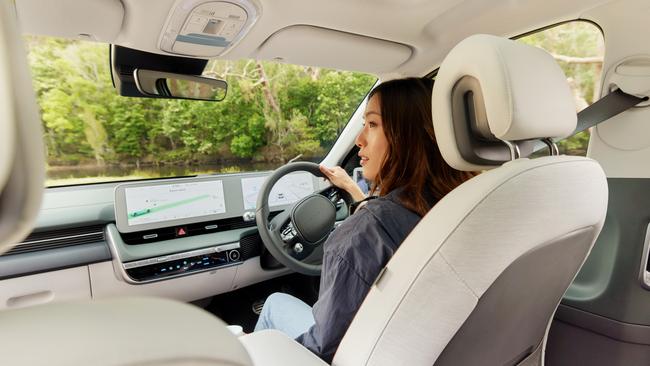
WHAT DID YOU LIKE?
KEL: There was a familiar feel to the interior design. Accessing the separate aircon controls below the infotainment screen was easy, and I love it when the central cupholders can cater for a larger water bottle or takeaway coffee.
GRANT: Among the highlights is what they call vehicle to load, which enables the Ioniq to be used to power other devices via a domestic three-pin plug. There’s one available below the rear seats and another next to the charging port on the outside. So technically you could take your whole coffee machine with you, or add power to an electric bike, laptop or other small devices.
KEL: That’s probably not a feature I’d use regularly although handy if you were travelling. I do appreciate the space in the EVs, the vacant area below the console was perfect for handbags or my gym gear.
GRANT: One of the other benefits is longer servicing intervals – they are only required every two years or 30,000km. Under the lifetime service plan the first maintenance requirement costs $570, second is $1090 and the third $570.

WHAT DID YOU LOATHE?
KEL: Parking wasn’t too bad, especially with the use of cameras and the bird’s-eye view, although it wasn’t nimble in tight spaces.
GRANT: With a turning circle of nearly 12m, that’s similar to dual-cab utes such as the Mitsubishi Triton and Nissan Navara.
KEL: Wireless charging was available, but your phone had to be plugged in to use Apple CarPlay or Android Auto.
GRANT: Among the greatest challenges with the Ioniq 5 is getting the one you want. There is low supply of the less expensive Techniq and Dynamiq models. No such issues with the range-topping Epiq, but that is closer to $90k.
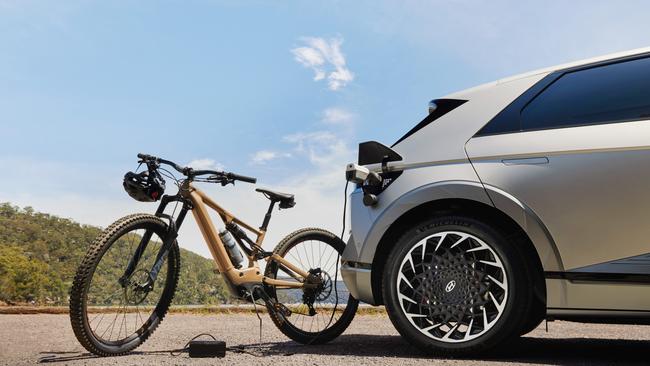
HOW WAS THE DRIVE?
KEL: Off the line it’s fast. Far quicker than I was expecting.
GRANT: The zero-to-100km/h time is 5.1 seconds – not so long ago anything just under five was nearly supercar territory.
KEL: Amazingly quiet, the Ioniq 5 was really easy to drive and it felt like a normal car … unless you opted to use the iPedal with the steering wheel shifters that rapidly slow things once you lift off the accelerator.
GRANT: Tipping the scales at more than two-tonne, it’s no lightweight. Yet composure comes in all conditions and even twisty terrain fails to ruffle its feathers. Grippy Michelin Pilot Sport rubber offers sticky performance although the trade-off is feeling the odd bump and lump.
KEL: Using our standard power socket at home worked fine, with one overnight charge of 12 hours adding about 130km of range.
GRANT: The basic 10 amp power point takes about 34 hours from near zero to full. More prevalent 50kW public chargers take 73 minutes to go from 10-80 per cent, while if you can find a 350kW ultra fast charger it can do the same job in 18 minutes.
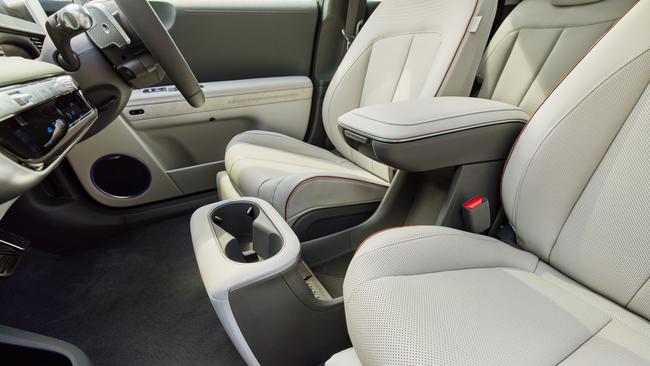
WOULD YOU BUY ONE?
KEL: For that kind of money, I think it’s a great choice. Awesome looks, reasonable interior space for a family, cool tech and the fun drive mean it ticks a lot of boxes.
GRANT: Supply has been an issue with the Ioniq 5, yet barring any more port congestion or quarantine issues, buyers shouldn’t have to wait more than four months. I’m a massive fan of the Ioniq 5 up against the likes of the Tesla Model Y, I’d take the Hyundai for looks and longevity.
Originally published as 2023 Hyundai Ioniq 5 review reveals great style, space and range


